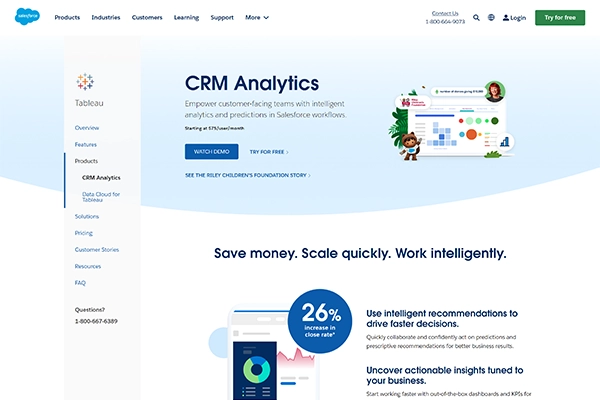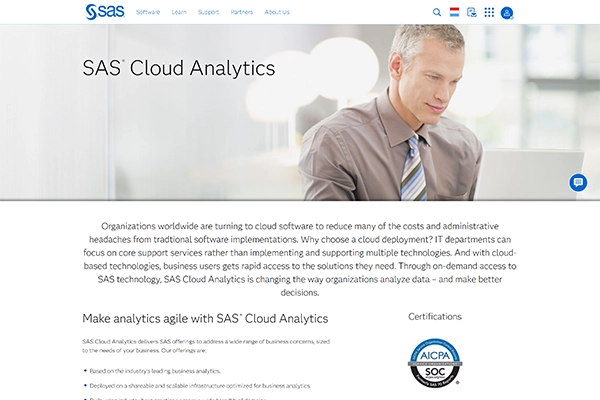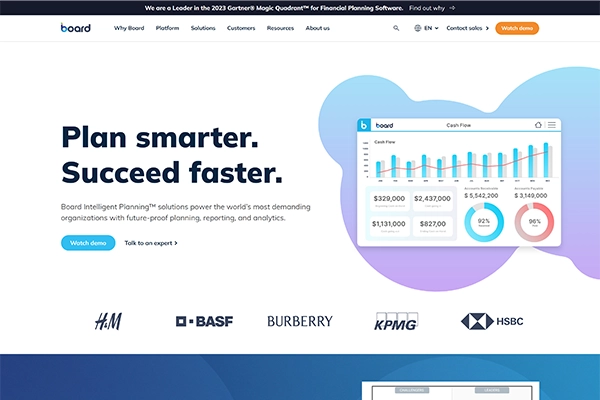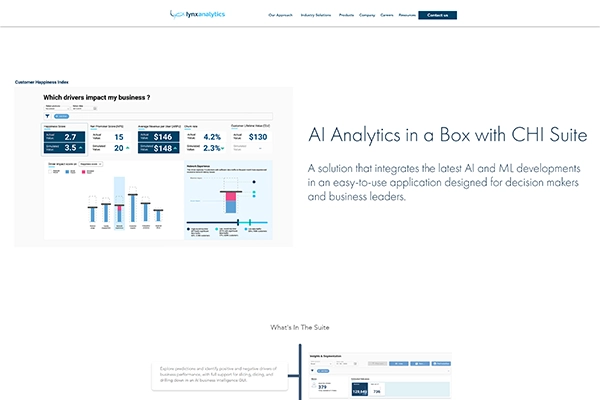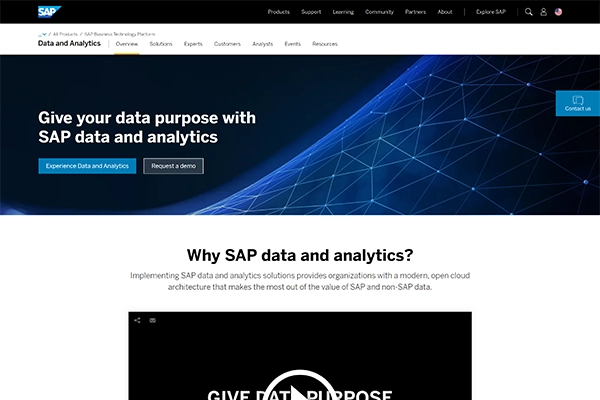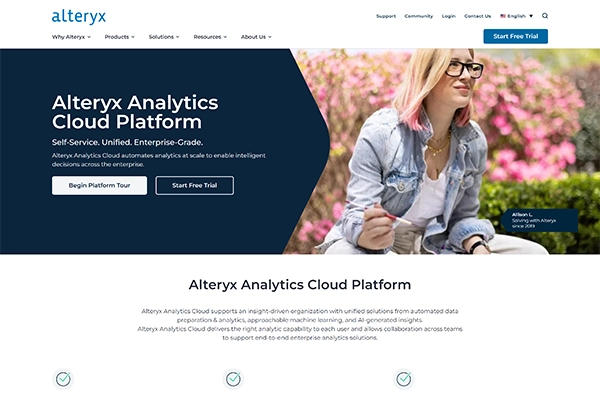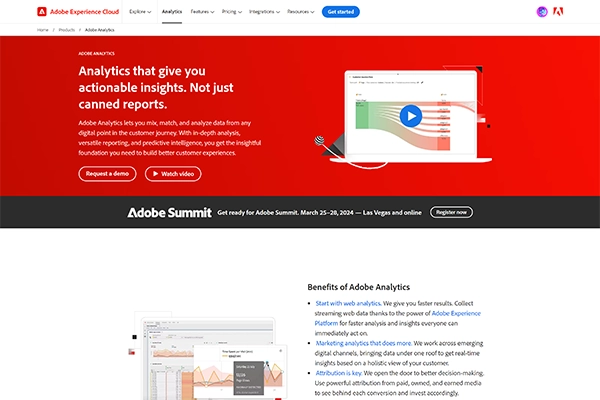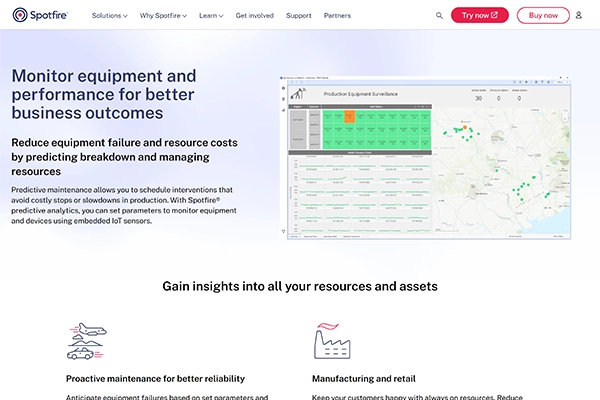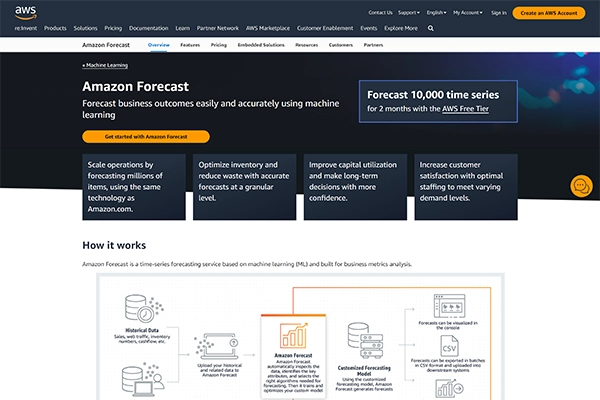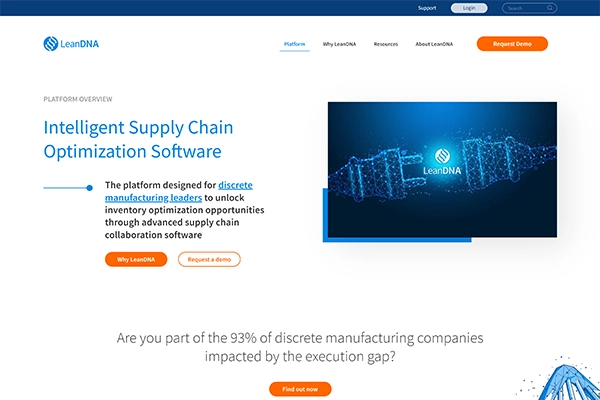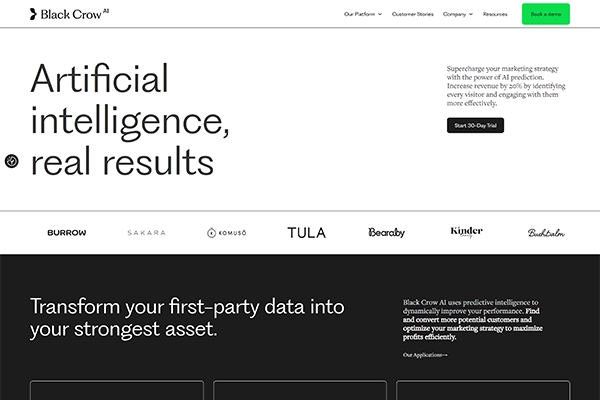Choosing the Right Predictive Analytics Tool for Your Business Needs
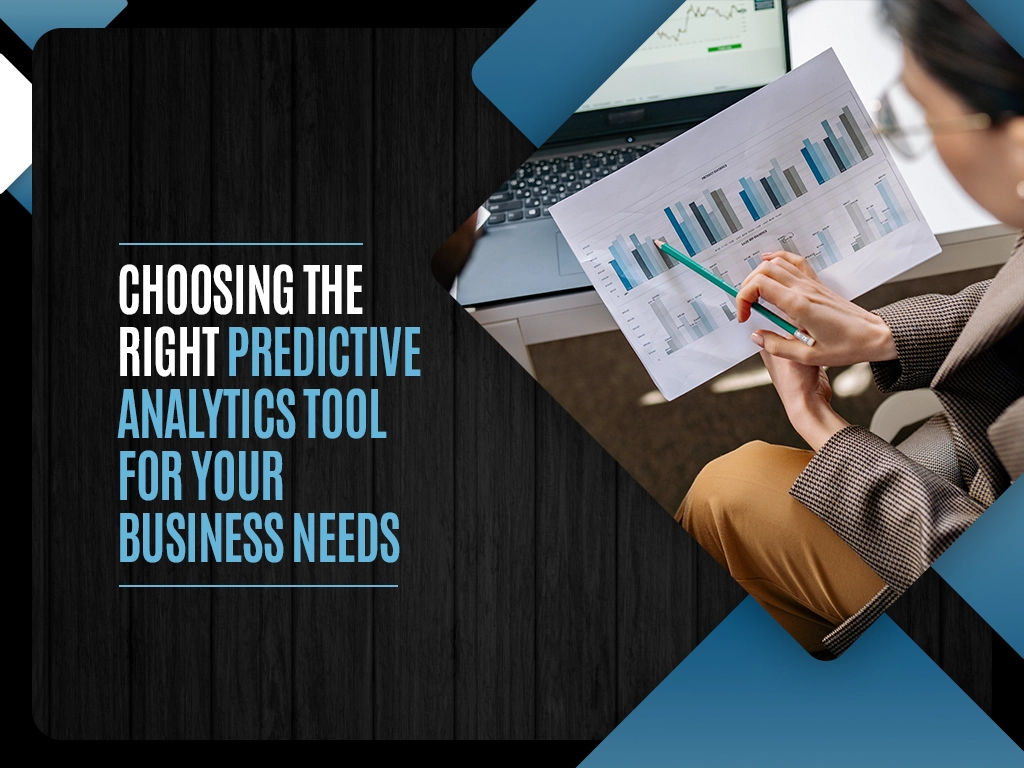
Data have been the driving force of the business. Companies of all sizes run on data generated across various resources. Yet, these heaps of information have little value unless used strategically. With predictive analytics tools, companies can connect and thoroughly analyze all these data to make the best decisions, forecast future trends, and avoid potential risks.
This article defines predictive analytics as it is, suggests how to choose predictive analytics tools, and gives an overview of the 11 predictive analytics solutions for various business needs.
What Is Predictive Analytics?
The main point of predictive analytics is processing current and historical information and learning from it to give valuable insights into future events. It relies on artificial intelligence (AI), machine learning algorithms in particular, as well as statistical techniques to leverage data for improving efficiency, reducing risks, and capitalizing on opportunities.
Predictive analytics software facilitates data processing to address all kinds of business needs:
- Improve customer retention. By giving a 360-degree customer experience view, predictive analytics spots potential churn and assists businesses in tailoring their marketing efforts to increase customer engagement and maximize income.
- Identify future trends. Predictive analytics analyzes historical data and helps businesses forecast trends and patterns to better plan operations and allocate resources.
- Minimize risks. Predictive analytics creates potential risk scenarios based on historical data processing and enables companies to avoid potential threats by taking proactive steps at the right time.
- Enhance decision-making. With the ability to analyze extensive data and forecast results, predictive analytics reduces guesswork to the minimum. It empowers businesses to make data-driven decisions much faster and achieve a higher ROI (return on investment).
Before discovering popular predictive analytical tools for businesses, let’s focus on some crucial factors to consider when picking the proper solution.
Choosing the Perfect Predictive Analytics Tool
Tools for predictive analytics offer various pricing options, levels of functionality, and specializations depending on the particular business requirements. Here are a few factors to keep in mind before making the right choice for your enterprise.
Business Goals
Choosing the right predictive analytics tool should align with the current and future business objectives. Do you want to improve customer experience, enhance operational efficiency, or make strategic decisions? It will be much easier to narrow down the options and choose the proper alternative once you understand how well it fits the business needs.
Costs
Depending on the features you’re looking for, the price range of predictive analytics tools may vary significantly. Free options may lack functionality, while expensive solutions can be too overwhelming for your business requirements. Research the market and look for the options that best suit the budget.
Integration Capabilities
Integration features are essential if you want users to access analytics from various applications they’re familiar with. Some solutions create easy data flow from customer relationship management (CRM) software and enterprise resource planning (ERP) platforms, while others won’t integrate with existing systems without additional assistance.
If you don’t have in-house developers and don’t want to involve outsourced engineers, select the tool that easily connects to your platform and other software, either directly or through third-party integration.
Intuitive UX/UI Design
Think of the end-user when selecting a predictive analytics tool. The faster your employees can master the tool, the better results your company will get.
Non-technical team members will appreciate a flexible solution requiring no coding background. With a flawless interface and appealing visuals, they won’t have difficulty navigating the predictive analytics platform, understanding dashboards, and creating reports.
Meanwhile, tech-savvy users will quickly adapt to more sophisticated tools. They also won’t have trouble customizing the system for unique company goals.
Mobile Friendliness
Mobile analytics allows businesses to make strategic decisions on the go and keep informed those employees who work remotely. When evaluating the options, think about what kind of mobile analytical features will suffice for users; consider whether they only view dashboards and reports or need to set and edit them instantly.
Scalability and Flexibility
Selecting a system that quickly adapts to the changing requirements is vital. Even if you initially incorporate predictive analytics to gain short-term analysis, opt for a tool capable of providing long-term forecasting as your business grows and objectives transform over time.
Customer Support
In case your team needs some assistance in handling predictive analytics software, make sure the tool delivers immediate support service and has detailed training materials to reduce the learning curve.
Multiple Data Sources
Predictive analytics tools can assemble complex structured, semi-structured, or unstructured data from multiple sources, such as databases, sensors, and social media platforms. Choose a solution that seamlessly gathers information from various data points and displays it on a single dashboard to keep track of business performance more efficiently.
Security
Information is a valuable possession, and safeguarding it should be a top priority. When selecting a predictive analytics tool, ensure it implements standard security controls and procedures at all levels and allows you to manage and distribute data access to users.
11 Best Tools to Use for Predictive Analytics in 2024
The market is swamped with diverse predictive analytical tools. Now that you know what factors to consider when choosing the suitable option, don’t hesitate to explore the top 11 tools for predictive analytics in 2024.
1. Salesforce Einstein Analytics
Salesforce CRM Analytics, also referred to as Einstein Analytics and Tableau CRM, is a powerful toolkit providing advanced data insights and predictive analysis specifically tailored for CRM applications. CRM Analytics employs AI (machine learning, deep learning, and predictive modeling) to make accurate forecasts.
One of its main capabilities is pulling data from various sources to get a full picture for analysis. CRM Analytics easily integrates with all Salesforce products, like Sales Cloud, Marketing Cloud, Commerce Cloud, etc. It boasts a sleek interface with pre-built dashboards and reports to help non-technical employees make the most of sales records and customer data.
CRM Analytics includes a tool called Prediction Builder to deliver highly precise projections. Salesforce CRM Analytics finds its application in various industries, including retail, healthcare, education, and finance.
2. SAS Cloud Analytics
SAS Cloud Analytics boasts a full package of analytics tools, including predictive analytics powered by machine learning. Thanks to its cloud-based nature, it easily adapts to the growing volumes of data.
SAS Cloud Analytics can seamlessly integrate with various data sources, enabling users to manage different data sets. Because of its broad feature set, the tool may require an intense learning curve for non-technical users. However, it provides extensive support services and educational materials to facilitate the training process.
3. Board
Board is predictive analytics software with a responsive interface and dashboards that can update information on the fly. Users simply fill in data and metrics, and the system crafts different scenarios and analyzes potential outcomes.
Board is capable of extracting data from various sources to facilitate decision-making. As for deployment, it can be either cloud-based or on-premise. It’s possible to move from the Cloud to on-premises without any adjustments.
4. Lynx Analytics
Lynx Analytics’ Customer Happiness Index is an advanced analytics platform that integrates diverse techniques from data mining, predictive modeling, real-time scoring, and machine learning to evaluate customer behavior and identify patterns and trends to forecast the next best steps.
Its real-time scoring feature allows businesses to monitor changes in customer satisfaction levels and take action when needed. Lynx Analytics applies sophisticated tools to guarantee customer data protection.
5. SAP Predictive Analytics
SAP Predictive Analytics uses statistical analysis and data mining to recognize hidden insights and data correlation for building reliable predictive models. It has two user interfaces for automated and expert analytics.
The former allows users to arrange data, prepare comprehensive social graph analyses, and generate customer product recommendations. The latter enables in-depth data analysis using multiple visualization techniques, like cluster charts, decision trees, and parallel coordinates.
6. Alteryx
Alteryx makes predictive analytics more accessible to amateur data scientists and business analysts without IT background. With its intuitive drag-and-drop interface, users can make practical findings from large volumes of unstructured data and share their knowledge with other team members. Alteryx provides numerous automated set-ups for data analysis to address unique business needs.
7. Adobe Analytics
Adobe Analytics distinguishes itself as a web and marketing analytics platform with predictive capabilities. It leverages machine learning and advanced statistical models to analyze customer data, detect uncommon patterns, and predict potential behavior. Based on this knowledge, the platform enables users to make smart decisions, tailor marketing efforts, and spot new opportunities for growth.
8. Spotfire
Spotfire is an analytics and data visualization platform designed by TIBCO Software. It applies advanced predictive modeling and machine learning algorithms to forecast future outcomes.
The platform has a wide range of visualization options, such as maps, graphs, and charts, to help users understand complicated data models. Spotfire allows users to collect data from diverse sources for complete analysis. With its click-and-go learning curve, business owners can build operational dashboards to keep track of various processes.
9. Amazon Forecast
Amazon Forecast is a fully managed service employing machine learning to give accurate time-series forecasting. It easily connects with other Amazon Web Services, providing easy deployment and data generation.
Due to its cloud-based architecture, Amazon Forecast automatically scales up or down depending on the volume of forecasts. The pricing tiers are determined by the quantity of stored data and the number of forecasting hours.
10. LeanDNA
LeanDNA is a cloud-based SaaS platform enabling manufacturers to optimize stock levels, eliminate shortages, and improve delivery on time. With its cloud-based predictive analytics and decision support software, employees across the company can cooperate in real-time to solve inventory issues. The software seamlessly integrates with any ERP system and adjusts data across disparate ERP, planning, and other supply chain execution tools.
11. Black Crow AI
Black Crow AI makes the most of artificial intelligence to boost marketing performance. The tool uses predictive intelligence to discover and convert a wider range of potential customers. The platform gives up-to-date insights for companies of all sizes.
It takes less than 15 milliseconds for the patented machine learning platform to estimate the future value of every website visitor based on their actions. AI-powered predictions improve marketing strategies and increase profits significantly. Black Crow AI boasts seamless integration in a few seamless actions.
Final Word
Predictive analytics tools offer considerable advantages as they project future outcomes and allow businesses to unlock the full potential of data assembled from various resources. Backed up by cutting-edge AI technologies, namely machine learning, these tools empower companies to analyze customer behavior, predict product demand, adapt pricing schemes, and tailor marketing efforts efficiently.
With a wide selection of predictive analytics tools available on the market, finding the proper solution won’t be an easy task. Businesses should consider multiple factors, such as pricing, integration capabilities, user-friendliness, scalability, security, and more, to decide on the predictive analytics tool that best suits their needs. A good thing is to try a demo version, if possible, and determine whether the software works for you.


